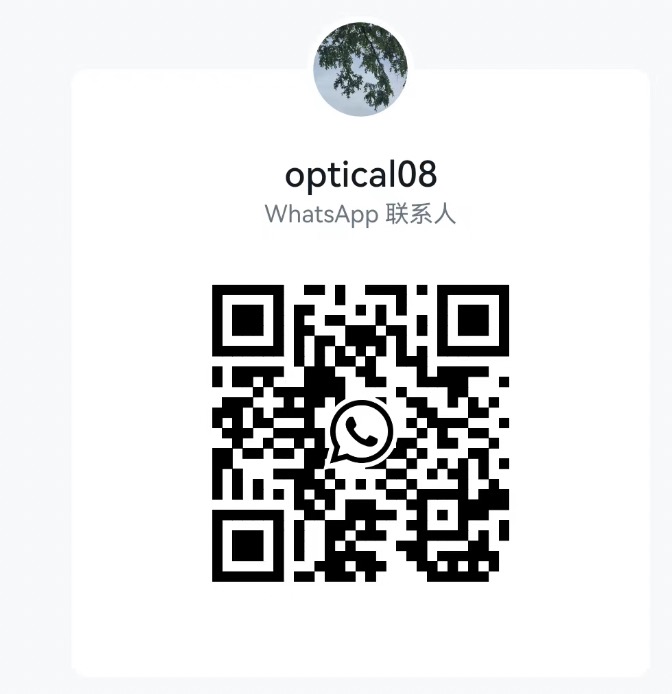Fiber optic polarization-dependent isolators are crucial optical devices with extensive applications in optical communications, optical testing, and optoelectronic equipment. Below is an overview of these devices:
Definition
Fiber optic polarization-dependent isolators are optical devices that utilize the polarization properties of lightwaves to achieve unidirectional transmission and reverse isolation of optical signals. They allow optical signals to pass through with low loss in one direction while producing high attenuation in the opposite direction, ensuring the stability and reliability of optical signal transmission.
Structural Composition
Fiber optic polarization-dependent isolators primarily consist of three components: a polarizer, a Faraday rotator, and an analyzer:
Polarizer: It selects the linearly polarized light aligned with its transmission axis from the incident light, serving as the baseline for subsequent processing.
Faraday Rotator: Utilizing the Faraday effect (a type of magneto-optic effect), it rotates the plane of polarization of the light passing through it. This rotation is non-reciprocal, meaning the effect differs for light traveling in opposite directions.
Analyzer: With its transmission axis oriented at a certain angle (typically 45 degrees) to the polarizer, it further filters and verifies the polarization state of the light after passing through the Faraday rotator. Only light with a polarization state aligned with the analyzer's transmission axis can pass through with low loss.
Working Principle
The working principle of fiber optic polarization-dependent isolators is based on the differences in polarization states and the Faraday effect. When an optical signal enters through the polarizer, only the linearly polarized light aligned with the polarizer's transmission axis can pass. This polarized light then enters the Faraday rotator, where its plane of polarization rotates under the influence of an external magnetic field. Upon reaching the analyzer, if the polarization state matches the analyzer's transmission axis, the optical signal passes with low loss; otherwise, it is highly attenuated and isolated. Due to the non-reciprocal nature of the Faraday effect, the rotation of the polarization plane for light traveling in the reverse direction is opposite, preventing it from passing through the analyzer, thus achieving unidirectional transmission and reverse isolation.
Characteristics
High Isolation: Fiber optic polarization-dependent isolators exhibit high attenuation for reverse-propagating optical signals, effectively isolating them from causing interference in the system.
Low Insertion Loss: In the forward transmission direction, the loss of optical signals passing through the isolator is minimal, ensuring efficient signal transmission.
Polarization Dependence: The performance of these devices is closely related to the polarization state of the optical signals, enabling selection and isolation based on polarization characteristics.
High Stability and Reliability: Fiber optic polarization-dependent isolators maintain stable performance under various environmental conditions, offering high reliability and long lifespans.
Applications
Fiber optic polarization-dependent isolators find widespread applications in optical communication systems, optical testing, and optoelectronic equipment. For instance, in optical communication systems, they can be used to isolate polarization interference between components like optical amplifiers and wavelength-division multiplexers. In optical testing systems, they help eliminate polarization-related errors in optical signal transmission paths. In optoelectronic devices, they protect light sources and receivers from interference caused by reflected optical signals.
Shenzhen optics forest Co.,Ltd specialist manufacturer of Fiber optic polarization-dependent isolators
|
Specifications
|
|
Parameter
|
Unit
|
Value
|
|
Stage
|
|
Single Stage
|
|
Center Wavelength
|
nm
|
1550
|
|
Operating Wavelength Range
|
nm
|
±30
|
|
Isolation,at23 ℃
|
dB
|
>30
|
|
Insertion Loss, λc, 23 ℃
|
dB
|
<0.7
|
|
Return Loss (Input/Output)
|
dB
|
>55
|
|
PDL
|
dB
|
>25
|
|
Max. Optical Power (CW)
|
W
|
0.5
|
|
Tensile Load
|
N
|
5
|
|
Fiber type
|
|
SMF-28
|
|
package dimensions
|
mm
|
Ф5.5*55
|
|
Operating Temperature
|
°C
|
-5 to +70
|
|
Storage Temperature
|
°C
|
-40 to +85
|


 光林销售
光林销售 liz
liz